It’s not uncommon to spot fall color on broadleaf evergreen species like satsuki azalea. As azaleas focus their resources on newer foliage, the older foliage can turn orange, red, purple, or yellow. Most of the satsuki in my garden have dark green foliage, but some sport brighter colors.
Shisen with green and yellow leaves
I’m not concerned by the colored foliage as the newest leaves remain a healthy green.
Yellow and green leaves
In some cases, the fall color coincides with purpling that occurs when the weather cools.
Yata-no-kagami
Purple and red foliage
Red and purple leaves
The fall color in older leaves likely reflects a lack of fertilizer. When nitrogen becomes limited, a plant can send it where it’s most needed, typically to the newest leaves. Deficiencies of immobile nutrients like calcium or iron show up in new foliage and old.
Azaleas with adequate nitrogen and healthy soil conditions are more likely to stay green through winter.
Healthy azalea foliage
When I apply fertilizer at this time of year, I use products like bone meal that are low in nitrogen as I don’t want to encourage new growth in winter. Depending on the weather, I typically start using higher nitrogen fertilizers in February.
For those of you who grow satsuki, you’ve likely noticed that a few flowers can open this time of year. Most of my azaleas have at least one or two flowers open now – a nice suggestion of the colors to watch for in spring.
Pink flower
White flowers
Subscribe to Bonsai Tonight
New Posts Delivered Every Tuesday and Friday

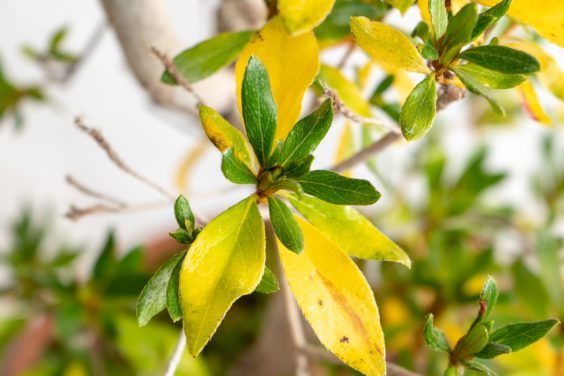
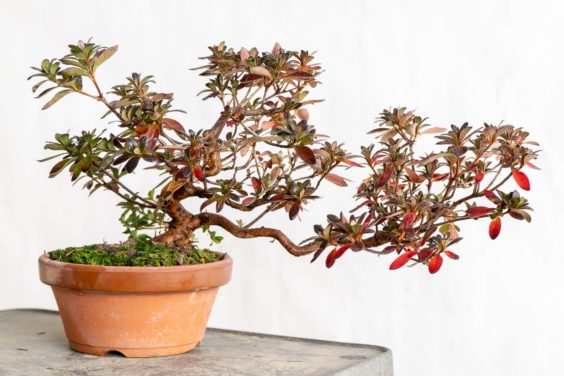
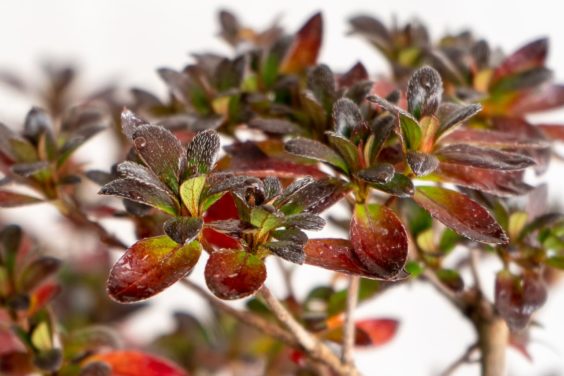
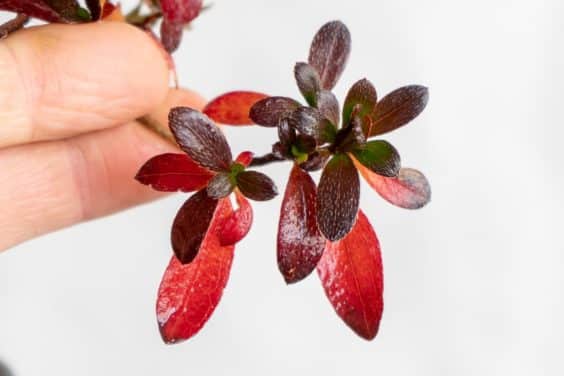
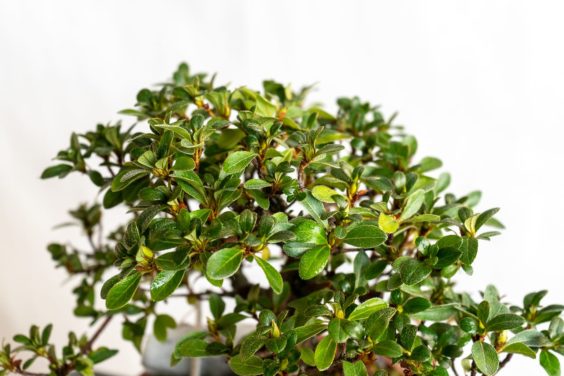
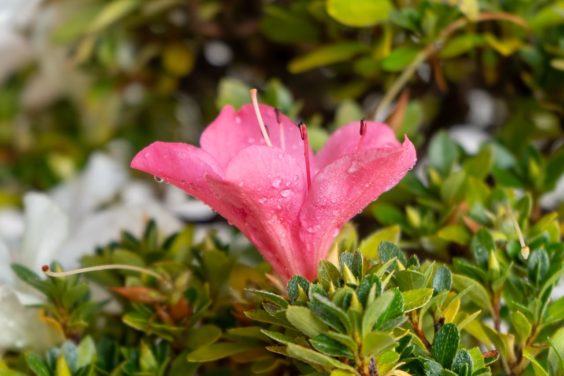
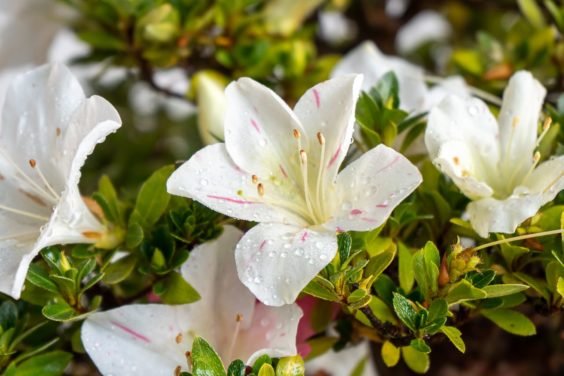
Pierre Seguin says
Jonas,
Satsuki also do loose some old leaves following a cold spell. I am not talking about freezing but cold, just above freezing point: 3-4°C. I am in the Montreal area, Canada and I personally observed that with recently acquired azaleas like the big Nikko I got last fall. Maybe they were not used to lower temperature… Are the ones turning color recently acquired?
Thanks for the blog and forum. Always a great source of infos.
Jonas Dupuich says
Hi Pierre! That’s right, azaleas definitely lose leaves when it gets cold. Different cultivars have different cold tolerance as some look fine in winter and others are nearly deciduous. I’ve found that both the recently imported azaleas and the trees that have been in California for years can be either green or full of color and dropping leaves. It may be the cultivar and relative health of the tree matter as much as how well adjusted they are to the climate.